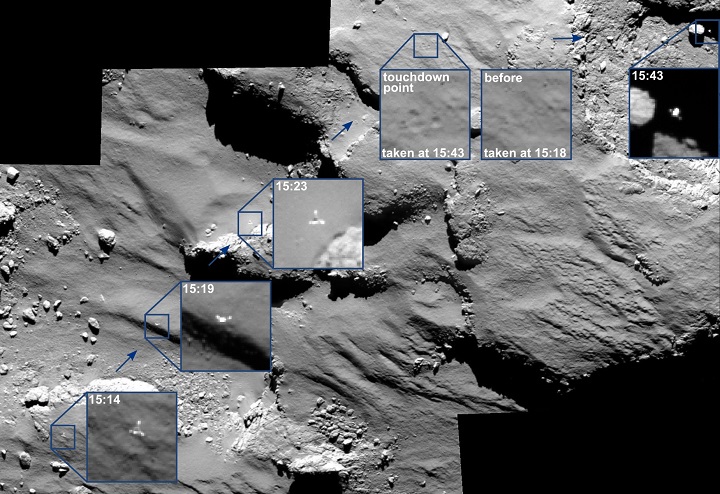Images taken by the Rosetta spacecraft’s OSIRIS imaging system show the portions of the journey its Philae comet lander undertook on Nov. 12, as it approached and then rebounded off the surface of comet 67P/Churyumov-Gerasimenko.
The mosaic comprises a series of images captured by OSIRIS’s narrow-angle camera over a 30-minute period spanning the first touchdown. The images were taken with Rosetta’s OSIRIS narrow-angle camera when the Rosetta spacecraft was orbiting the comet at about 9.6 miles (15.5 kilometers) from the surface. The images have a resolution of 11 inches (28 centimeters) per pixel, and the enlarged insets are 56 x 56 feet (17 x 17 meters). The time of each of image is in spacecraft event time and marked on the corresponding insets in Greenwich Mean Time (GMT/UTC).
From lower left to upper right, the inset images show Philae descending toward, and across, the comet before touchdown. The image taken at 15:43 GMT (7:43 a.m. PST / 9 minutes after Philae first contacted the surface) confirms that the lander was moving east, as first suggested by the data returned by the CONSERT experiment, and at a speed of about 1.1 mph (0.5 meters per second).
The final location of Philae is still not known, but the imaging team is confident that combining the CONSERT ranging data with OSIRIS and navigation camera images from the orbiter and images from near and on the surface from Philae’s ROLIS and CIVA cameras will soon reveal the lander’s whereabouts.
